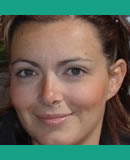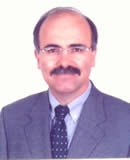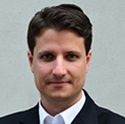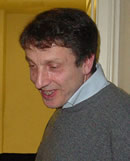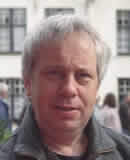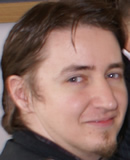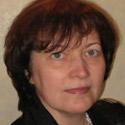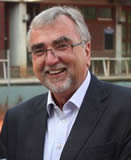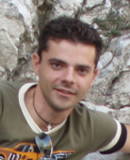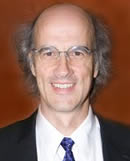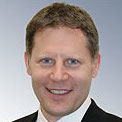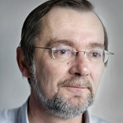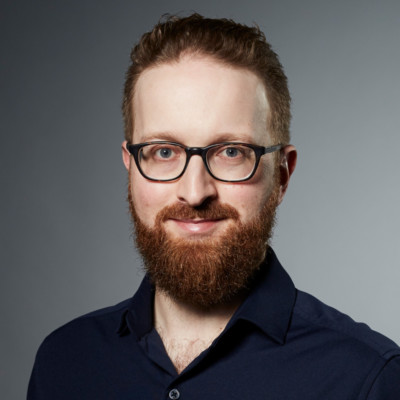Abstracts
Have a look at the lecture abstracts of this year's edition and explore the profiles of the presenters!
All times are UTC+2 (Vienna, CEST - Central European Summertime).
To identify some of the cultural difficulties between IT & business perspectives on the subject of Enterprise Modelling, to highlight some of current trends & difficulties, to offer a “hands on” business process mapping opportunity, incorporating some of the common, business related process attributes.
Lecture at NEMO2014
Date/Time: Wednesday, July 16, 2014 at 09:00 UTC+2/CEST
Participation in networks has nowadays become very important for any enterprise or organization striving to achieve a differentiated competitive advantage. Collaboration is a key issue to rapidly answer market demands, through sharing competencies and resources. In fact, collaborative networks manifest in a large variety of forms, including virtual organizations, virtual enterprises, dynamic supply chains, professional virtual communities, collaborative business ecosystems, etc. A large body of empiric knowledge related to collaborative networks is already available, but these organizational forms are complex entities whose proper understanding, design, implementation, and management require the integration of different modelling perspectives. In this context, ARCON is introduced as a comprehensive modelling framework that copes with the endogenous (structural, componential, functional, and behavioural dimensions) and exogenous interactions (market, support, societal, and constituency dimensions) perspectives, as well as the life-cycle of the network and the modelling intent.
Lecture at NEMO2014
Date/Time: Friday, July 18, 2014 at 16:00 UTC+2/CEST
A strong focus of Software Engineering research in modelling is on software for models (e.g., modeling tools) as well as on models for software (e.g., in tool construction or reverse engineering). This talk gives a personal overview of models in Software Engineering, which started with early visual notations via a plethora of modelling languages and editors and lead to unifying approaches like UML (on the language side) and generic metaCASE software (on the tool side). In this era, foundational work on model representations, meta-modelling, constraint descriptions, and semantics as well as on classification of modelling languages into a few modelling paradigms provided a deeper understanding of the world of modelling in general. Adding the ability for code generation and model transformation, the process of software development was automated further by several environments, some of which even provide additional services like model evolution, model querying, model execution, or model comparison. Integrating these capabilities into a crossplatform and crosslanguage infrastructure may now lead to software components which contain code and models as equal-level and cooperating parts at runtime, making software evolution easier to handle and leveraging, e.g., the development of adaptive software or dynamic product lines.
Lecture at NEMO2014
Date/Time: Friday, July 18, 2014 at 09:00 UTC+2/CEST
In this lecture it will be shown how concepts of meta modelling can be applied in two core areas of modern information systems. For this purpose the lecture will start with a brief introduction into the theoretical foundations of meta modelling and the corresponding realization of modelling methods on the ADOxx meta modelling platform. Subsequently, the application areas of business process management and ontologies will be introduced. Thereby it will be particularly focused on the challenges and opportunities of adapting existing modelling concepts in these areas to the personal needs of users, organizations, as well as technical processing functionalities in the form of algorithms. As a solution to these challenges the introduced meta modelling concepts will be applied. Furthermore, it will be discussed how this approach permits to design and implement innovative software applications that bring together the technical opportunities of semantic technologies and established business process management methodologies. The concepts and applications will be illustrated using case studies from research and industry projects. In particular it will be reverted to concepts and implementations from the SeMFIS research project conducted at Stanford University that is hosted at www.omilab.org.
Lecture at NEMO2014
Date/Time: Wednesday, July 09, 2014 at 11:00 UTC+2/CEST
In recent years, the development of domain-specific modelling languages (DSML) has gained remarkable attention. This is for good reasons: A DSML incorporates concepts that represent domain-level knowledge. Hence, systems analysts are not forced to reconstruct these concepts from scratch. At the same time, DSML contribute to model integrity, because they include already constraints that would otherwise to be added manually. Even though there has been a considerable amount of research on developing and using domain-specific modelling languages, there is still lack of comprehensive methods to guide the design of these languages. In this course the participants will learn to use a method for designing DSML. It includes heuristics to analyse requirements and meta-modelling guidelines that support frequent design decisions. The use of the method will be illustrated by the development of an example DSML.
Lecture at NEMO2014
Date/Time: Tuesday, July 08, 2014 at 09:00 UTC+2/CEST
Process Modelling and Business Intelligence are two important areas in business informatics, which are treated often rather separated from each other. Looking at the literature and the activities in the two areas shows that process modelling takes a look at the business from a more production oriented view, whereas business intelligence activities emphasise more the role of the customer in the business process. In this lecture we want to show how one can take a unified view onto these two approaches and how such a view supports business activities. For demonstration we use as business case a marketing campaign and show how one can use business analytics for detailed specification of the business process and how this specification influences formulation of the business goals. The proposed method combines ideas of business process modelling with data mining formats and shows how different analytical techniques can be integrated using the ADOxx platform. Main emphasis is on methods for data provisioning and data understanding which extend traditional approaches by quality computations.
Lecture at NEMO2014
Date/Time: Tuesday, July 15, 2014 at 16:00 UTC+2/CEST
The main objective of this course is to introduce researchers to the theory and practice of a new emerging discipline named Ontology-Driven Conceptual Modeling. In this discipline, theories coming from areas such as Formal Ontology in philosophy, but also Cognitive Science, Philosophical Logics and Linguistics are employed to derive engineering tools (e.g., modeling languages, methodologies, design patterns and anti-patterns, model compilers and simulators) for improving the theory and practice of Conceptual Modeling, in general, and Domain Ontology Engineering, in particular. In this course, the expressiveness and relevance of these theories and derived tools are demonstrated through their application to solve some classical and recurrent modeling problems concerning the well-founded representation of: classification and taxonomic structures, part-whole relations, intrinsic and relational properties, formal and material associations, association specialization, attribute conceptual spaces, roles and events.
Lecture at NEMO2014
Date/Time: Tuesday, July 08, 2014 at 16:00 UTC+2/CEST
We define Japanese creative services and discuss how they have been sustained successfully. The¬re are many “Shinise” (shops of long standing) service companies in Japan that are quite unique compared to the companies located in any other geographical region. They typically have anec¬dotal values based on nature and seasons, various types of culture, histories, and/or lifestyles. They also have the mind-set of “Omotenashi,” Japanese hospitality, and a framework to evaluate and in¬herit their service competence. We will examine these capabilities with some concrete examples. We then explain the mechanisms of the sustainabi¬lity and scalability of Japanese Creative Services. A statistical analysis comparing the Shinise compa¬nies in the Osaka region with those in the Kyoto region is reported. An exclusive inheritance me¬chanism designed towards a designated successor and the separation of the authority from technology inheritance can play an important role for the or¬ganizations to provide creative services. In order to enhance the values of the Japanese creative servi¬ces, a systematic analysis from the viewpoint of ser¬vice science and innovation will be essentially im¬portant. We believe that this kind of approach will contribute to creating new values within the field of service science and for value-added global services.
Lecture at NEMO2014
Date/Time: Wednesday, July 16, 2014 at 11:00 UTC+2/CEST
Conceptual models refer to objects, classes, meta classes, and so forth. Models at the higher abstraction levels constrain the lower-level models. We investigate the mechanism proposed for exploiting multi-level models, in particular deep instantiation and rules whose variables range over objects and classes at the same time. In both cases, knowledge about objects is encoded at a level beyond the class level, hence applies to any class instantiated from the “rich” meta class level. We demonstrate as example the definition of traceability of model elements across multiple modelling languages. We also review deep instantiation and provide a customizable implementation.
Lecture at NEMO2014
Date/Time: Wednesday, July 16, 2014 at 16:00 UTC+2/CEST
The presentation will introduce the vision of Next Generation Enterprise Modelling, based on metamodelling foundations and principles, as well as on emerging paradigms such as Linked Enterprise Data. The foundations, as well as the building blocks and the value of modelling methods, will be discussed both in a general case and in the concrete, scenario-oriented application case given by the ComVantage FP7 research project (http://comvantage.eu). Technological, conceptual and formal foundations will be established as enablers for Next Generation Enterprise Modelling. As enterprise modelling originally envisioned, a hybridization of modelling approaches is needed in order to cover the multiple facets of a business view, its context and resource requirements (including IT support requirements). The concept of “modelling method” establishes key building blocks to enable the required hybrid modelling and to increase the value of models beyond the functions traditionally employed within the paradigm of model-driven software engineering. Outcomes of the ComVantage reject project will serve as an application case. The project investigates new possibilities for enterprise collaboration, raised by mobile technology and the Linked Data paradigm, hence it provides relevant enterprise scenarios. To fulfil such scenarios, a modelling method was introduced, that enables a holistic approach to modelling business processes within their business context and execution environment. A modelling prototype implementation was developed within the framework of OMILab (http://www.omilab.org/web/comvantage/home). Exemplary situations will be described in order to highlight and reflect on specific design decisions
Lecture at NEMO2014
Date/Time: Monday, July 07, 2014 at 11:00 UTC+2/CEST
The approach utilizes the power of systems theory models and enterprise architecture. The meta-structure of Beer’s Viable Systems Model (VSM) is taken as the basis for requirements identification and analysis for an information system. The enterprise is considered as a system of systems. The information system is regarded as one of enterprise subsystems which have to mirror the variety of parameters handled by a super-system. Each information flow is represented via specific enterprise architecture pattern in the enterprise model. The use of pattern helps to ensure the consistency of requirements. The use of VSM helps to care that all types of information flows relevant for viability of the enterprise are detected and represented in the enterprise model.
Lecture at NEMO2014
Date/Time: Wednesday, July 09, 2014 at 16:00 UTC+2/CEST
Generally formal methods can be classified into three categories: logic, automata and process algebra. Among them, process algebra can be considered most suitable for modelling distributed mobile systems, due to the notion of concurrency, distribution, movement, interaction and control of processes, as well as temporality. The most wellknown process algebras in this category are CCS, π-Calculus, Mobile Ambient, ACSR, etc. In the lecture, the basic criteria for concurrency, distribution, movement, interaction and control will be discussed and analysed in the modelling perspective. The discussion and analysis will include the basic laws and propositions to describe the basic properties of the systems and their behaviours, especially based on strong and weak equivalences. The efficiency and correctness of the modelling will be demonstrated with railroad-crossing systems examples. Besides, some limitations and possible extensions of the algebras will be discussed, such as, visibility of nondeterminitic concurrency, synchronousness, temporality, etc. At the end, the main issues in my research topic on the algebras will be introduced with a new algebra called, δ-Calculus.
Lecture at NEMO2014
Date/Time: Friday, July 11, 2014 at 09:00 UTC+2/CEST
In today’s dynamic business environment, emergent application software is regarded as a key component in the service industry. The effective and efficient development of such software systems can have a major impact on the economic value of digital companies. One important factor in achieving this is to ensure that the design and evolution of the software system can comply with the design and evolution of the enterprise. To this end, focus on the development lifecycle model has shifted towards dynamic configuration using approaches such as agile methods, method-driven development and software-oriented architectures. These efforts are complemented by a response to adaptation at operational level by exploiting context-awareness. However, there still exists a gap between enterprise requirements and software solutions. This talk will focus on a relatively recent development in the field based on the notion of ‘business capability’. The notion of ‘capability’ has been traditionally used in non-technical domains such as in socio-economic analyses, organizational studies, and strategic management. In information system engineering capability has been examined in the context of information system agility, service-orientation, software process improvement, and business-IT alignment. This talk will outline the field, introduce a development framework, including meta-models and process phases, provide examples from a use-case and define a number of challenges for researchers and practitioners alike.
Lecture at NEMO2014
Date/Time: Friday, July 18, 2014 at 11:00 UTC+2/CEST
Ambient assistance is a continuously growing field in ICT: Based on smart sensors, life video analysis techniques as well as speech recognition and text-to-speech applications various kinds of human centered assistance become feasible and affordable. The range of applications is broad and covers everyday situations in private and business environments as well as support for people with special needs. Consequently, Ambient Assistance is a challenging and promising field for computer scientists, software engineers and information technicians in both, research and application, with lots of questions to answer and technical solutions to find. Since dealing with the support of humans, it is an interdisciplinary field affecting Psychology (activity theory, mental behavior etc.), Neurology, Medicine, Law (privacy, data security), Philosophy (ethics), Domotics (home automation systems) and others more. Models play a key role in ambient assistance systems as they act as the integral means for data and knowledge acquisition, representation, evaluation and exchange for the various system components. We will start our lecture with a short overview of already existing best practice examples and then work out the key notions and concepts that form the basis of modelling endeavors in that field. Based here-on, we will discuss the objectives, concepts and elements of the “Human Cognitive Modelling Language” HCM-L, which was developed in the “Human Behavior Monitoring and Support” project HBMS. Deeper insight will be gained in the afternoon Parallel Working-Groups that are headed by members of the Application Engineering Research Group: Dr. Fadi Al-Machot, Assoc.Prof.Dr. Christian Kop, Dr. Judith Michael, Assoc.Prof.Dr. Vladimir Shekhovtsov, and Dr. Claudia Steinberger.
Lecture at NEMO2014
Date/Time: Thursday, July 10, 2014 at 11:00 UTC+2/CEST
Several languages have been suggested for modeling business processes. Practice shows, however, that a powerful modeling language alone is not enough. Users require guidance and assistance in the preparation of models, that is, during application of the language. In this course the students will learn the Horus Method. This method defines various stages of modeling and is a recipe-like guideline that has been proven in practice. In practical exercises to this lecture students will collaborate in a Web 2.0-based social network, to define business objectives, strategies and business processes together and will elaborate a common understanding of an organization.
Lecture at NEMO2014
Date/Time: Thursday, July 17, 2014 at 11:00 UTC+2/CEST
A crucial success factor in information systems development is the alignment of the system with business goals, business semantics and business processes. Developers should be freed from programming concerns and be able to concentrate on these alignment problems. Model-driven system development (MDD) not only provides a structured and systematic approach to systems development, but also offers developers the possibility of using model transformation technologies to derive models of a lower abstraction level that can be further refined, and even generate software code automatically. From the experience got with the advanced MDD platform provided by Integranova, this presentation will show how to successfully integrate business process modelling (BPM), requirements engineering (RE) and object-oriented conceptual modelling with the objective of leveraging MDD capabilities. The current state of the art on modelling methods and code generation tools will be discussed to explore different ways to match an information system with business requirements. Concrete principles, concepts and common practices of MDD will be presented with a special focus on model-driven requirements engineering, meaning by it how business process models and requirements models can be embedded in a complete MDD process. As a practical application, a specific method and notations are explained, but the ultimate goal is that assistants are able to apply this knowledge to their own contexts, to either industrial practice or academic research.
Lecture at NEMO2014
Date/Time: Thursday, July 10, 2014 at 09:00 UTC+2/CEST
The modelling of knowledge, action and time is a topic of current research within the broader domain of knowledge representation and reasoning. The course will focus on declarative approaches for modelling and reasoning with change, paying particular attention to the integration of knowledge and action (by means of artificial software agents). As time is inherent in any type of activity and process, the course will also deal with the representation of temporal properties that characterize the occurrence of actions and the knowledge they generate. Practical aspects of reasoning about knowledge action and time in the context of agent-based systems, ambient intelligence and cognitive robotics will be exposed in addition to the theoretical frameworks. Students will also have the ability to conduct exercises with software implementing a fully-axiomatized event-based formalism, in order to address reasoning problems involving aspects such as commonsense reasoning and planning, cast in the context of ambient environments and cooperating intelligent agents.
Lecture at NEMO2014
Date/Time: Thursday, July 10, 2014 at 16:00 UTC+2/CEST
The basic concepts of security and privacy will be presented. The various standards (e.g. ISO27001, 27002, NIST) and methodologies (e.g. OCTAVE, CRAMM) used for security management will be analysed as well as the security procedures. Specific case studies will be analysed.
Lecture at NEMO2014
Date/Time: Tuesday, July 15, 2014 at 11:00 UTC+2/CEST
After a short introduction into what an ontology is the course will focus on modelling ontologies using description logics. We will explain the rationale behind the use of a mathematical formalism like description logics as the means to model ontologies. The model-theoretic semantics underlying description logics lays the foundation for terminological reasoning from which various added-value services can be derived. Moreover, since representing ontologies with description logics makes them machine-understandable the ontologies can be easily shared and utilized by different applications, i.e. the semantics is inherent in the representation and does not reside in the programs interpreting the representations. The course will give examples from various application areas how ontology modelling can be utilized.
Lecture at NEMO2014
Date/Time: Thursday, July 17, 2014 at 16:00 UTC+2/CEST
Modelling Methods are frequently classified as informal, semiformal or formal, respectively. Each of the three classes has its particular advantages. In this contribution we focus on formal methods, and survey their common mathematical basis. Hence, instead of discussing subtle differences of models, we show what they have in common. In detail we separate three aspects: -Behavioural models: automata, transition systems, MSC, scenarios, finite and infinite behaviour, inductive invariants, simulation and bisimulation, process algebras, Petri nets, BPMN. -Data depicting models: signatures, sigma structures, terms, quantors, first order logic, ASM, Z, high level Petri nets. -Properties of models: composition and refinement, temporal logic, model checking. Participants at this course will be able to understand the essentials of the many variants of modern techniques and corresponding tool based analysis methods for enterprise modelling.
Lecture at NEMO2014
Date/Time: Monday, July 14, 2014 at 09:00 UTC+2/CEST
The course introduces students to developing new modelling languages through Domain Specific Modelling approach with MetaEdit+ platform. During this course the students will get an overview of working with MetaEdit+ when developing DSM’s and then develop support environment for their own modelling language. The tool allows language developers to rapidly build and evolve their methods and then try them out on the fly.
Lecture at NEMO2014
Date/Time: Tuesday, July 15, 2014 at 09:00 UTC+2/CEST
We examine the current state and problems of modelling enterprises as well as software systems and discuss a number of approaches to tackle those. In particular, we discuss how to make use of models in large development projects, where a set of heterogeneous models of different languages needs is developed and needs to fit together, e.g. describing high-level structures of the organisation, business processes, data structures, automatically executable functions, constraints and so on. A model based development process (both with UML as well as a domain specific modelling language (DSML)) heavily relies on modelling core parts individually and composing those through generators to early and repeatedly cut code and tests from these models. We discuss in detail compositionality on models and heterogeneous modelling languages and how it supports agile evolution of such infrastructures.
Lecture at NEMO2014
Date/Time: Thursday, July 17, 2014 at 09:00 UTC+2/CEST
Organisations, despite their apparent preoccupation with facts, numbers, objectivity, concreteness, and accountability, are in fact saturated with subjectivity, abstraction, guesses, making do, invention, and arbitrariness … just like the rest of us” (Weick 1980, p. 5) - This lecture addresses challenges when constructing a domain-specific modelling language (DSML) in support of managerial decision-making, specifically communication about intentions, expectations and goals of decision-makers and other human actors involved in such group processes. Following a method for designing a DSML (Frank 2010) presented in the early morning lecture, essential design alternatives and design decisions w.r.t. a respective language design will be discussed. A subsequent afternoon exercise session will further the discussion.
Lecture at NEMO2014
Date/Time: Tuesday, July 08, 2014 at 11:00 UTC+2/CEST
Business processes incorporate lots of decisions. Business decisions are important, but are often hidden in process flows or activities. It is not considered good practice to model the detailed decision paths in the business process model, because hardcoding (decision) rules in processes leads to complex and inflexible process models. Separating rules and decisions from the process simplifies the process model (separation of concerns). In analogy with the Business Process Modelling & Notation Standard (BPMN), a Decision Model & Notation standard (DMN) is being developed. Decision modelling describes business decisions to be made, with their interrelationships and requirements, together with the detailed decision logic used to make the decision. One of the common forms of decision modelling is a structure of decision tables, describing the premises and resulting outcomes of a specific decision situation. This course is about the relations between business rules, decisions, decision tables, and business processes.
Lecture at NEMO2014
Date/Time: Wednesday, July 09, 2014 at 09:00 UTC+2/CEST
Enterprise Modelling can be conducted in an inside-out mode (i.e. representing what is there, e.g. by a federated set of models of the enterprise) or in an outside-in mode (i.e. representing what is needed in different ways for certain stakeholders or stakeholder groups). Possible use scenarios for an outside-in perspective are, among others, IT consolidation management, business continuity management, risk management, or enterprise transformation programs. Due to the growing importance of transformations, e.g. in the context of digital business, this course focuses on transformation as enterprise modelling application scenario. Transformation types are explained and respective modelling requirements/capabilities are discussed. As a special type of models which are important in the context of transformations, boundary objects are discussed.
Lecture at NEMO2014
Date/Time: Monday, July 14, 2014 at 16:00 UTC+2/CEST
Published in 1982 by McCarthy, the REA (resource-event-agent) model is a fundamental business model. This model contains three basic business concepts, which are Resources, Events and Agents, and their relationships, which are stockflow, duality, control and responsibility. The REA model describes the fundamental structure and behaviour of any business enterprise. According to this model, the core of an enterprise’s activities over the course of its life is constituted by its history of economic exchanges or economic conversations with parties inside and outside of the firm’s boundaries. Based on the REA model, Hruby and his colleagues at Microsoft Development Centre Copenhagen have developed a set of business patterns. These patterns are divided into Structural Patterns and Behavioural Patterns. Structural Patterns are instances of the REA model at the business operation level, whereas Behavioural Patterns extend the REA model with software system functionality. My lecture will first introduce the REA model and its associated business patterns. I will then elucidate how these patterns can be used to model a complete business application.
Lecture at NEMO2014
Date/Time: Monday, July 07, 2014 at 16:00 UTC+2/CEST
The example-based business process modelling method (eGPM) is a visual approach to model selected business processes and their IT-support. The models are easy to understand for people in different departments, business organization and its specialists alike. The method aims at common understanding and communication about the processes which are modelled. Characteristics of the eGPM method are: (a) cooperative business processes are modelled as “cooperation pictures” based on selected scenarios, (b) simple pictograms make models easy to comprehend, (c) processes are structured along the lines of “who makes what with whom”. The initial lecture will present the conceptual basis of the eGPM approach, putting business process modelling into the context of application-oriented software development. It will characterize software development as a learning and communication process with a strong need for feedback among all parties concerned. The basic principles and concepts of eGPM approach will be explained. The tutorial will provide hands-on experience with the eGPM tool. Examples from different application domains and usage contexts will show the usability of eGPM in many professional contexts.
Lecture at NEMO2014
Date/Time: Monday, July 14, 2014 at 11:00 UTC+2/CEST


